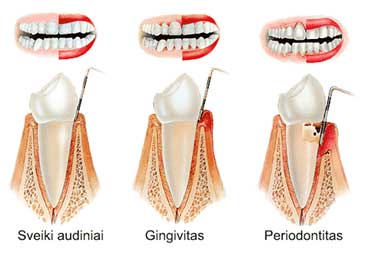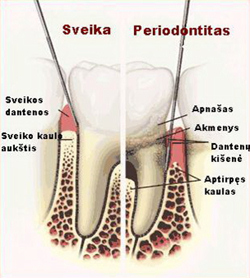Periodontal disease treatment
Periodontitis is a progressing gum and periodontal tissue inflammation disease. It’s a common cause of lost teeth. The main periodontitis cause is soft and hard deposits and the bacteria within it. If the soft deposits around the teeth are not removed, it crystallizes to form a hard covering, dental stones. The bacteria in it destroy the gum; it becomes red, swollen and bleeding.

Jaw bone begins to decay if it not treated a long while, gum pockets emerge and a dental root turns unprotected. The process involves deeper and deeper tissue until teeth are loose and they are lost.

This disease is dangerous because the sick person doesn’t know anything about it a long while as it progresses painlessly. The treatment of periodontal disease depends on level of damage. It can be:
- Non-chirurgical
- Chirurgical
Periodontitis can be treated in non-chirurgical way by removing dental stones above the gums and under them as well as removing bacteria from gum pockets. It’s done by making a deep curettage – cleaning of dental pockets.
A heavy periodontitis stage is treated in chirurgical way. A patch operation is done for that, and bone substitutes are used, if needed (synthetic or natural). The assessment of the status of your teeth and gum and the whole information about treatment will be provided by a qualified periodontitis expert.














